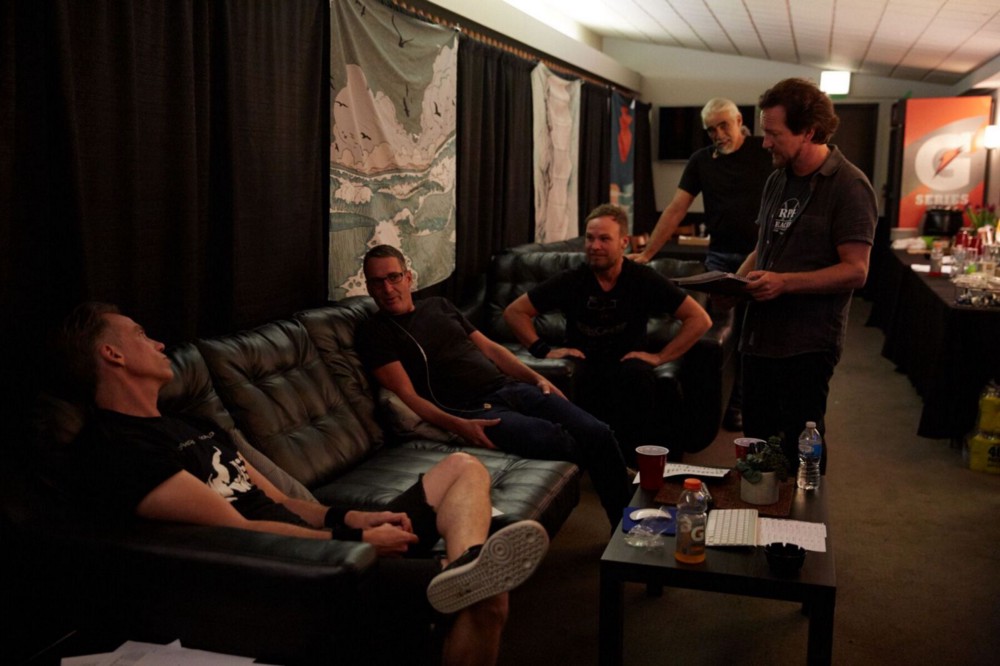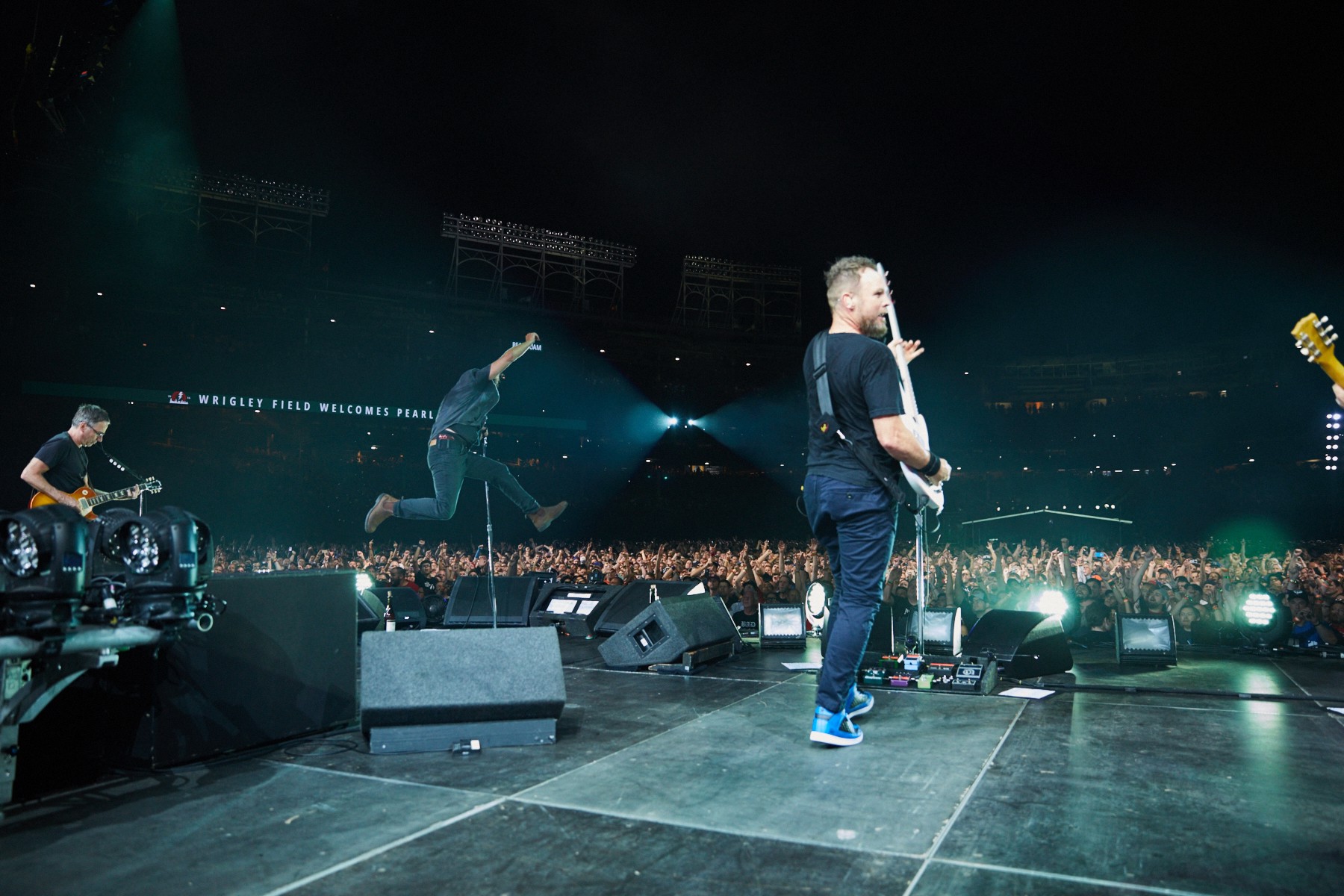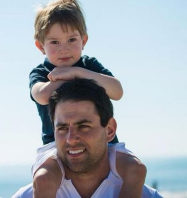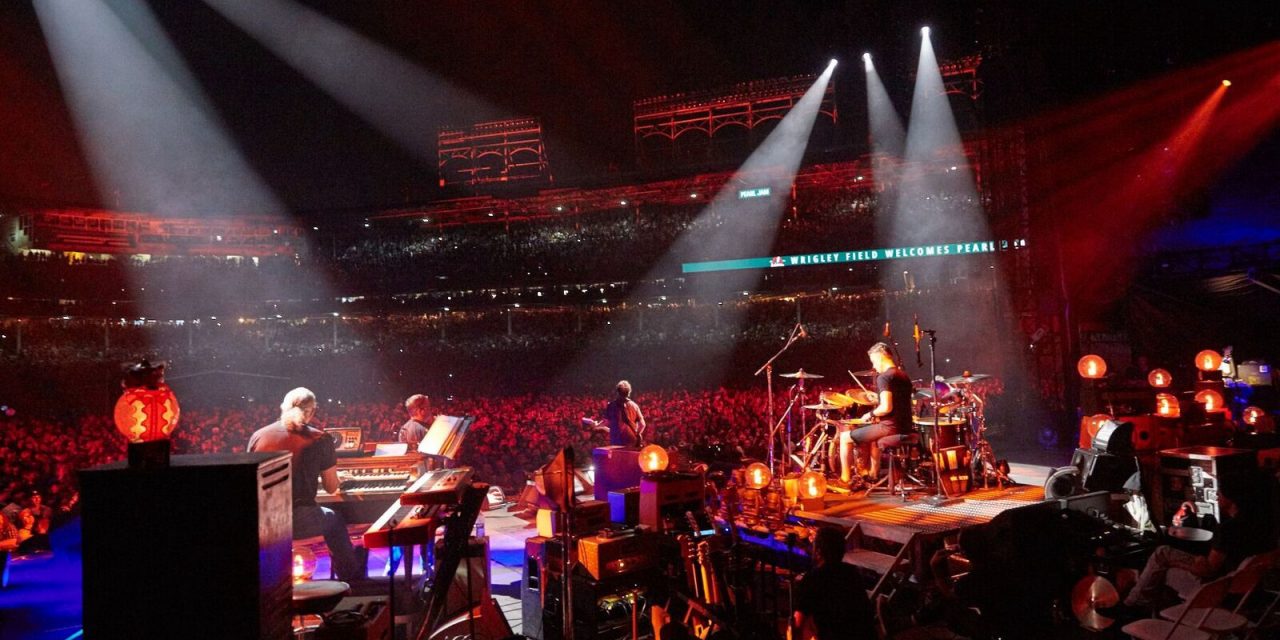Inside the magic. An interview with filmmaker/photographer, Danny Clinch

“Don’t let anyone say that it’s just a game
For I’ve seen other teams, and it’s never the same
When you’re born in Chicago, you’re blessed and you’re healed
The first time you walk into Wrigley Field”
August 20 /August 22, 2016: Pearl Jam plays two epic shows at Wrigley Field.
November 2, 2016: The Chicago Cubs win the World Series for the first time since 1908.
Today marks the debut of Let’s Play Two — a documentary by renowned photographer/director, and long-time Pearl Jam collaborator, Danny Clinch. The film beautifully captures the magic of what transpired on both the Wrigley stage and field. Chicago, the hometown of Eddie Vedder, has been a special place for Pearl Jam throughout their career. The band’s first show in the windy city took place on July 21, 1991 at the same iconic venue where the film premiere will be held — the Metro, in historic Wrigleyville. You can argue the Cubs team of 1991 contained some Pearl Jam characteristics. Players such as Ryne Sandberg, Andre Dawson and Mark Grace exuded a relentless passion for both their craft and city.
Pearl Jam closed that 1991 Metro show with “Porch” — “Hear my name take a good look, this could be the day.” Over the next 25 years, both Pearl Jam and the Chicago Cubs would forge paths of courage, resiliency and immense creativity. Their spirits would often combine into occasions of Chicago bliss (Soldier Field, The Vic fan club show, Lollapallooza, 2013 Wrigley 2am), then they’d set back on course within their respective fields.
In 2007, Vedder penned the Ernie Banks inspired “All The Way”. Like “Porch” there’s a theme of … “have faith because … someday.” Ultimately their faiths combined and delivered one of the more thrilling collision-of-sports-and-music waves of all time.
And Danny Clinch was there to capture it all. From the pre-show, backstage corners of Wrigley Field, to the streets, to the dugouts, Clinch did what Clinch does in focusing on the passionate moments that made it so special. I recently had the chance to speak with Clinch who took me inside his process, creative approach and favorite memories.

In addition to your photography work, how did you get into film-making?
I’m a big fan of the photograph as a document. A lot of what I studied in school was the work of Robert Frank and Danny Lyon, and these photographers that were documenting honest moments. I was really interested in that myself. I started looking at the early Annie Leibovitz and Jim Marshall’s photographs of musicians. They felt so real, like you were in the scene— sitting with Gregg Allman or Mick and Keith in the recording studio. These photographers then started to do some films — mostly documentary and art films. That intrigued me, I was paying close attention to it. When I started photographing musicians, I came at it from a documentary standpoint of capturing real moments or real people, and the history of that. At a certain point, I realized that I would love to make documentary films.
I was photographing Ben Harper for a Guitar magazine. What I recognized about Ben was that not only is he a great musician, but I thought he would be a great subject to document because I could not see him doing anything else with his life but making music. That led to my first film called, Pleasure and Pain. I spent a year or so on the road, following Ben around and following his backstory with his parents and grandparents who owned an interesting music store in Claremont, California. The process fascinated me, and then I started doing a few music videos.
After that, in the pre-web days, there were EPK (electronic press kits) in the music industry. People would send out packages to radio stations and journalists about someone’s new record. I did a couple for Citizen Cope. I would make a short film about him, it would be burned onto a DVD and it would be sent out along with a one-sheet about what he is up to and the new record. I jumped on that bandwagon. To me, it was sharing a creative story and vision with people through a little art film. I ended up doing a few for Citizen Cope, I did one for Bruce Springsteen’s Devil and Dust record, Charlie Mars and a bunch of musicians who allowed me to tell their story.
When Bonnoroo came around, I started making films about that and then of course, making Immagine in Cornice with Pearl Jam was a big step for me. I truly enjoy it — the storytelling of who’s making the music and why.
One of the things I love about your film work is that it still comes from behind the lens of a photographer. Meaning, it seems like a similar approach to your photography work of truly capturing the moments and emotions as opposed to simply relaying what happened.
Yes, for sure. It’s all visual storytelling, whether it’s one moment or a series of moments strung together. That’s what I’m going for. As we both admit, we are fans of music and the musicians. That’s why we are doing this. We love music. So, it comes down to, what do I want to see, personally? I want to see an intimate huddle of Eddie Vedder backstage working out the setlist with Mike McCready. I want to see the stuff that I wouldn’t get to see otherwise. I’m always fighting for that instead of grabbing just the concert. I love seeing soundcheck or a little backstage jam.
As the director for Let’s Play Two, were you also the one filming in addition to photographing the Wrigley shows?
I directed the two shows at Wrigley. I shot some 16-millimeter film personally, some moving image stuff. My job as the director is to hire people who understand my aesthetic and people who are great camera operators. I was able to bring on an amazing team. One of the unique things here was my relationship with the band. For example, as well as wandering around with the still camera to take photographs during the show, I also carried around a small camera that would allow me to capture moments backstage in places where people really weren’t allowed to be. I was lucky to have access to things that others weren’t.
When the Cubs went on the World Series run, I captured a lot of the intimate moments with Eddie on a small camera. The intent was to keep it personal and low key. I had other people out in the street filming the fans, people in the streets and bartenders.

Going into the two Wrigley shows, was it always the plan to film and make something like Let’s Play Two? How did it come to be?
Yes, the plan was to film the shows. From there, we were going to collect the best song performances and create a film. We wanted to give a nod to Eddie being from Chicago and growing up in Evanston, plus the bands overall love of Chicago. The fact that their first show in Chicago was at the Metro, which is so close to Wrigley Field, and now they are playing Wrigley Field was always going to be a focus. The band having a great respect for Ed’s love of the Cubs and Wrigley was also important. The idea was to just capture that and trust that whatever happens, Pearl Jam never disappoints. They did bring it, and we were all grateful that it was something the band and fans were happy with. It was two epic nights. We took that and we knew we were solid with that content. We had “All The Way”, but are they going to go all the way? We didn’t know. We were just thrown into the universe that it was a possibility. After the two incredible shows, and feeling really great about it, I turned to Eddie and Theo Epstein and said, “If the Cubs make a run I am coming back with cameras.” And it happened.
It’s fascinating how the two worlds came together. For the film, what would have happened if the Cubs did not win?
Had they not won, it still would have been a great story and a similar film, but with a … stay tuned ending. We wouldn’t have bailed on it if the Cubs did not win. What a great gift, the year Pearl Jam plays Wrigley and Ed sings the seventh inning stretch, and gives everyone a proper shout-out, they actually do go all the way. It’s an incredible story. Within it, there’s was so much buildup. It was up and down, they were down 3–1, then they were coming back and tied the series at game six. Then during game seven, the Cubs jump out in front with a home run. They were winning 6–3 in the eighth inning, I am about to film the celebration and I go down to where Eddie is behind home plate. The next thing you know its tied at six and there’s a rain delay. I thought I was the new curse by going down there — to film a celebration that didn’t happen. I was freaking out. It was crazy. But how it all happened led to all the more of a payoff. It was unbelievable.


What was it like filming the World Series, was that a new experience for you?
It was new for me. I have not done a lot of sports film-wise. I’m a Rock n’ Roll guy, but I grew up playing soccer and I love sports — especially playoffs, regardless of sport. I don’t really have an allegiance to a particular team. I just enjoy competition and I like the underdog. It was really nice to put my style on that kind of a story.
There was one experience that was extra special. I was on the field during batting practice at Game 4 of the World Series at Wrigley. I ran into this photographer who had seen my 60 Minutes feature, so he introduced himself. He knew I had done a lot of Springsteen work and told me the Cubs manager, Joe Maddon, was a huge Springsteen fan. He throws parties with the B Street Band, is friends with Max Weinberg and goes to shows. As he’s telling me this, Joe Maddon walks by. I then get introduced to Joe as Springsteen’s photographer. The next thing you know we are deep into conversation about his love of Springsteen and Pearl Jam. He’s intense, talking about three inches from my nose. All of a sudden I get this feeling as I’m looking around, I realize I am the only one on the field without a baseball cap on, I’m wearing a fedora, it’s the World Series, and Joe Maddon just wants to keep talking about music.
That certainly sounds like a great manager.
Yes, exactly!
Where else did you shoot outside of Wrigley and atop Murphy’s Bleachers?
We didn’t do a ton. We did shoot at Murphy’s, but we really wanted to let the band concentrate on the show. It was more important to me to film the moment as it was happening. There was one idea that I wanted to execute and we did it — that was to have Mike McCready come out and play the “Star Spangled Banner”. We filmed that too. Aside from that, we were just thinking about what would be cool. The band needed to rehearse and in speaking with Ed he mentioned they were going to rehearse on the roof of Murphy’s, so I said, “Alright, let’s do it.” There was some great material from that.

You’ve captured some amazing photographs of genuine and special moments at these Wrigley shows. How do you integrate those shots into the film?
I do occasionally have photos mixed into the film. I did that here, and it’s one of my favorite moments of all. Sometimes you get into a spot that the moving image camera doesn’t see. Putting those photos in can help tell the story. We also incorporated photos from Mike’s new book “Of Potato Heads and Polaroids” into the closing credits. It’s part of the story, like the Eddie “Air Jordan” jumping shot or the one of Eddie and Jeff jumping from 2013. That’s the point of view that I really like. I don’t mind being in the pit, however I think being on the stage and capturing the relationship between the audience, the band and the venue in one photograph is really special.

From a fan perspective, what do you feel made these two Pearl Jam shows so unique?
It has a lot to do with how special the place is to the band and how they supported Ed’s love for the venue. I was at the 2013 show with the rain delay, it too was incredible. It meant so much to the band. Wrigley also serves as such a great destination place to go see Pearl Jam. There were people from Italy, New Zealand, Australia, Brazil and New Jersey. Let’s go out to Chicago, spend a weekend by Wrigley and go see Pearl Jam. That’s what’s so great about them — their following of fans. Their good time in life is to go take a road trip and see Pearl Jam. The energy there was so incredible. The thing about Wrigley Field is — you don’t walk out into a parking lot. You walk out into Wrigleyville. There’s brownstones and bars. It’s a real neighborhood unlike any other baseball park in America.

Do you have any favorite personal memories from the these shows?
The rooftop at Murphy’s. I’m such a music fan. I always want to see behind the curtain. There’s this great moment where they break into a little jam and there’s a little conversation going on about a song that Stone is playing up there on the roof. The entire band was chiming in on the conversation. They’re sitting around each other and everyone has their comment. It was this round-table of conversation, Jeff starts laughing, and you feel like you are sitting with these guys. As a fan, I feel like you’d want to be there and there you are — on the rooftop of Murphy’s with the band as they are having a conversation. I love it.
Outside of the live performances in the film, how did you go about pairing the right Pearl Jam song for a particular scene?
The band said to me, “It’s your film, you put the setlist together.” We designed in a way to match the spirit of the two shows — opening mellow and building the momentum. We then thought about what the scene was before the song. There was one scene where Beth who owns Murphy’s Bleachers is talking about how much Eddie loves the Cubs and she mentions that they want to talk about musicians instead of baseball— like Springsteen, or the Rolling Stones. Then we cut to Ed introducing a song and explaining how he came to Wrigley to see Bruce Springsteen.
There’s also a moment on the rooftop where Ed is going through some songs that they might play. He was playing “I Believe in Miracles” by the Ramones. We put that in there because we were hoping for a miracle.


Were you in the locker room when the Cubs won the World Series, filming the celebration?
I was not. I was sitting in the dugout with Eddie and Chris Chelios. There’s a great moment where we are in the dugout, it’s raining pretty hard and Ed interacts with Anthony Rizzo about how they actually did it and won the World Series. My plan was to always stick with Ed. He is a very modest guy. He never felt like he was entitled to be in that locker room.
I feel there’s this subconscious, mutual foundation between Pearl Jam and the Cubs team of last year and maybe the Cubs in general. They both seem to be built off fortitude, gratitude and passion. The way the two paths came together over the course of a few months appeared to be so special. Is that a fair observation?
It is. It’s actually part of the story in the very beginning of the film. It talks about how the band inspired Theo and how Theo inspired the band — how they complement each other. Theo sees how Pearl Jam treats themselves as brothers and the band is a family. He was inspired by that and wanted to bring that vibe to this Cubs team.

“We are one with the Cubs
With the Cubs we’re in love
Hold our heads high as the underdogs
We are not fairweather, but foul weather fans
Like brothers in arms, in the streets and the stands”
This film must also be such a keepsake for the band, namely Eddie as a Cubs fan and I imagine Theo Epstein as well.
Yeah, for sure. Right now, it just happened and it is really moving. I am so proud of the film. You fast forward five or ten years and it maybe can be something legendary to them.

From a fan perspective, it was all very emotional to witness, and then the Hall of Fame a few months later. You felt so proud and thrilled that this happened in the way that it did, and when it did. Thinking about that, what was the takeback for you in making Let’s Play Two?
As a filmmaker going in to making this, I really didn’t know what to expect. You have to leave it open to the universe to offer you something up and you have to be ready to capture it. I was prepared, ready and had these ideas flushed out that I worked so hard on, however, I had to be ready for the left turn that’s going to happen, that was unplanned, but better than what I had planned. The takeaway for me is to always be ready and trust your instincts. A band like Pearl Jam is never going to let you down. You have to be ready for it. They’re so smart and they care so much about their fans so they are always going to deliver something that is really emotional and powerful.
“And when the day comes for that last winning run
And I’m crying and covered in beer
I look to the sky and know I was right… today”

*all photos taken by/courtesy of Danny Clinch.
Catch Danny Clinch at the following Let’s Play Two screenings:
IFC public screenings in New York City — September 29th
Count Basie Theatre Red Bank, NJ — October 4th (introducing the film, Q&A)
For a list of Let’s Play Two screenings and to get the soundtrack visit: PearlJam.com/LetsPlayTwo
If you enjoyed, please recommend by clicking the heart below
Follow Artist Waves on: Facebook, Twitter & Medium
~ follow Jeff Gorra | twitter @JeffGorra |JeffGorra@ArtistWaves.com



